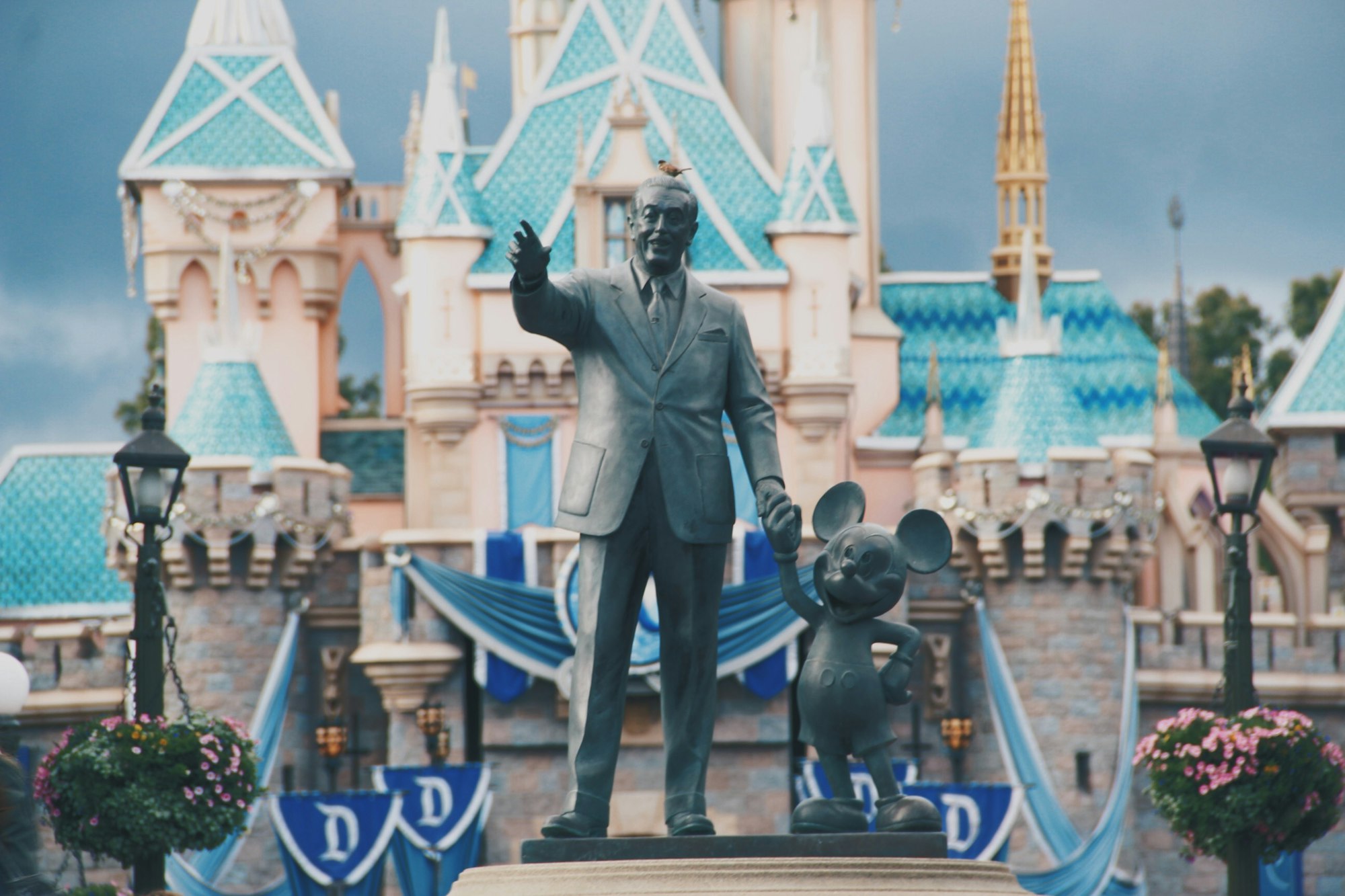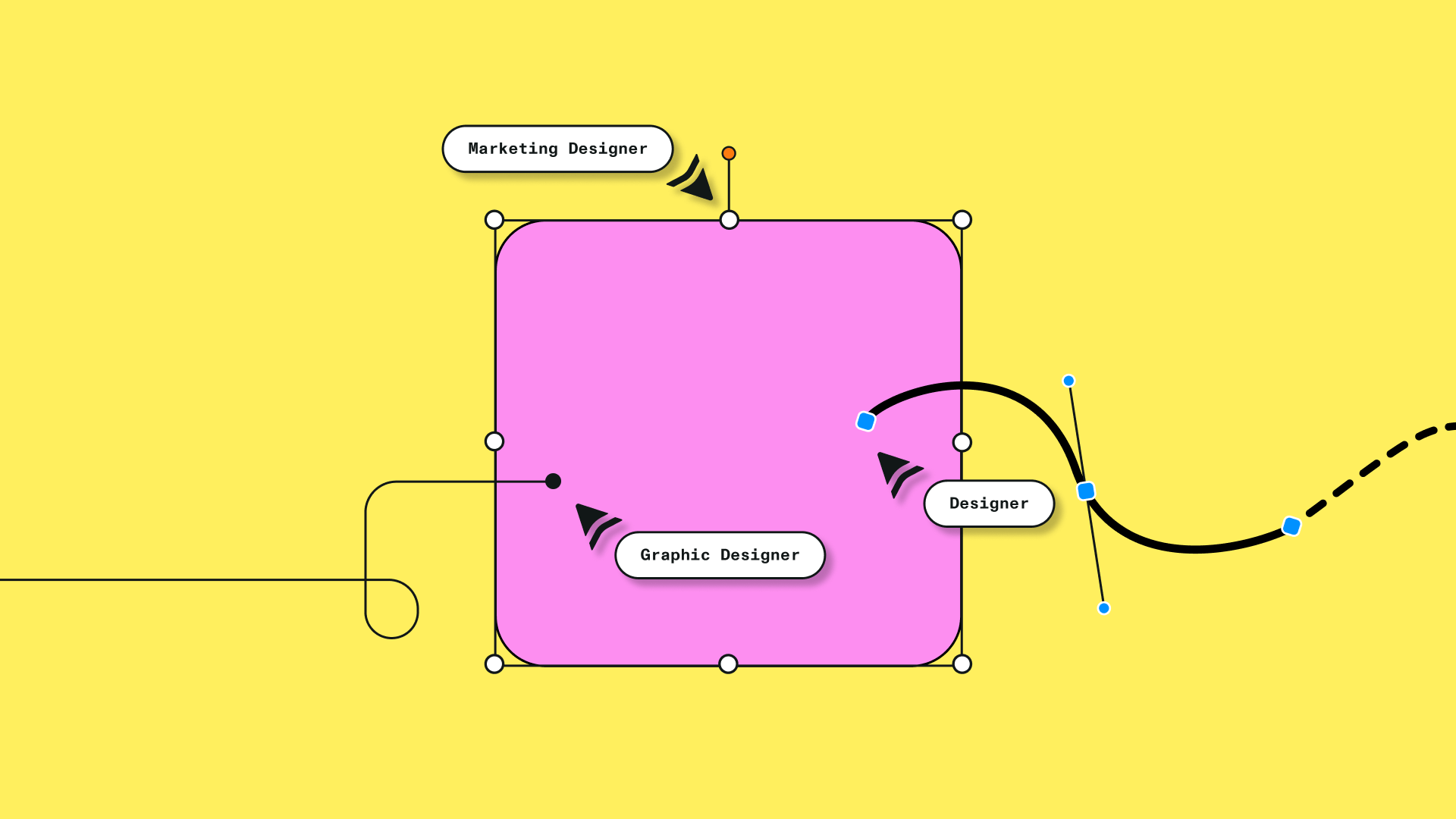The history of animation stretches back to the late 1800s, and today, the animation industry is bigger than ever, with more variety and volume on offer than you can even get your head around.
We’ve seen the types of animation expand over the years, along with the scale and number of productions.
In this time, certain animators have stood out for their contributions to the craft, and in this list, we have highlighted some of the most notable animation artists in history.
If you’re a budding animator and you’re tired of people asking when you’re going to get a ‘real job,’ you can just show them this list to 'shut them up.' It’s full of examples of notable animators who have achieved great success and made a huge impact on the world.
Nick Park
When it comes to stop-motion and claymation, Nick Park is arguably the best and most successful animator of this style in the world. Born in England in 1958, he had a keen interest in filmmaking and animation from a very young age.
Still, it was when he joined British animation studio Aardman Animations in 1985 that everything changed. There, he created some of the most well-known stop motion animation films of all time.
Park has received numerous awards for his work, including four Oscars (from six nominations), and Chicken Run has held the top spot as the highest-grossing stop motion animation film of all time since its release in 2000.
Rebecca Sugar
Since becoming a professional animator in 2009, Rebecca Sugar has been a core part of two highly influential and beloved animated shows. Sugar got their first big break when they joined the Adventure Time team in the first season as a storyboard revisionist.
Sugar identifies as non-binary and is the first non-binary person to have created an animated series for the Cartoon Network.
Sugar worked on both Adventure Time and Steven Universe simultaneously until the situation became untenable, and so they left Adventure Time after season five.
Sugar’s work has earned praise for its representation of LGBTQ+ themes. They are an animator who really put themselves into the work, and we feel that the series they've worked on are all the better for it.
John Lasseter
There is no better example of an animator who parlayed a love of animation into a big-time career than John Lasseter. Born in 1957, Lasseter was obsessed with cartoons as a kid.
He then studied character animation at the new California Institute of the Arts, before joining Disney as an animator in 1979. During the very early 1980s, Lasseter developed a fascination with the newly emerging capabilities of computer generated graphics.
Lasseter’s vision for the potential of CGI was more than realized. At Pixar, he directed Toy Story, A Bug’s Life, Toy Story 2, Cars and Cars 2, as well as working as a film producer on almost all of Pixar’s movies, such as Inside Out and Frozen.
In total, the films he has been involved in have brought in more than $19 billion in revenue, which makes him one of the most successful filmmakers in history.
Lotte Reiniger
The German animator and filmmaker Lotte Reiniger was a true pioneer. Born in 1899, Reiniger developed an early fascination with the German art of ‘scherenschnitte,’ which was inspired by the paper cutting and silhouette artform from China.
Reiniger also had a passion for the theater and for acting. She combined both her love for acting and for silhouette puppetry and started to make recreations of plays and fairytales. By 1915, Reiniger was working in the film industry, firstly producing title cards before creating animations and eventually producing her own films.
To begin with, Reiniger was making short films and advertisements, but in 1926 she produced what could be her best-known work – The Adventures of Prince Achmed.
William Hanna and Joseph Barbera
It could be argued that William Hanna and Joseph Barbera each deserve their own entry on this list, but their careers became so intertwined that they are inseparable.
The pair met while working at the animation department of Metro-Goldwyn-Mayer (MGM) in 1937, sparking the beginning of arguably the most successful animation partnership of all time. MGM dissolved its animation division in 1957, so Hanna and Barbera co-founded the Hanna-Barbera animation studio.
The partnership of William Hanna and Joseph Barbera lasted some 60 years, and some of the characters and properties they created are still yielding new material today.
Hayao Miyazaki
The Japanese animator and director Hayao Miyazaki is one of the most revered and respected figures in the world of animation for a good reason. His animation style is unmistakable, and as a director, he has created some of the most incredible anime films in living memory.
Miyazaki was born in Tokyo in 1941 and had a strong interest in animation and manga from a very early age. His first animation job was with the famous Japanese studio, Toei Animation.
In 1979 he left Toei Animation to join Tokyo Movie Shinsha and direct his first feature film, The Castle of Cagliostro. This marked the start of an illustrious career directing and producing feature films.
In 1985, Miyazaki co-founded Studio Ghibli and the studio released its first movie, Castle in the Sky, in 1986. This marked the start of Studio Ghibli’s incredible trajectory and resulted in Miyazaki being considered one of animation’s most successful filmmakers.
No wonder he is one of the world's most famous animators.
Walt Disney
The Disney empire is now so big and sprawling and covers so much of the world of entertainment and media that it’s easy to forget it started out as an animation studio way back in 1923.
From a very young age, Walt Disney had a keen interest in drawing and animation. He took art classes and became a commercial illustrator before setting up Disney Brothers Studio along with his brother Roy.
One of Walt Disney’s earliest creations was Mickey Mouse, and soon after the studio started producing feature films, such as Snow White and the Seven Dwarfs, Fantasia and Dumbo. Films like this pushed the potential of animated films and went a long way in establishing the animation industry.

Disney would go on to make live-action films as well, including classics like Mary Poppins.
Disney also got involved in the world of theme parks, starting with Disneyland. From then, the empire has continued to grow and grow, but it all started with Walt Disney’s cartoons.
Yuri Norstein
The Soviet and Russian animator Yuri Norstein is considered one of the best animators of all time, even though he has produced a comparatively small number of animated films.
Norstein studied art at school and then went on to take a two-year animation course. In 1961, after he completed his studies, he joined the studio Soyuzmultfilm. There, he worked as an animator on around 50 films before getting the opportunity to direct his own in the late 1960s.
Unfortunately for Norstein, slow production on his feature film, The Overcoat, led Soyuzmultfilm to fire him in 1985. Norstein remained undeterred and carried on with the production of the film.
Amazingly, production is still under way more than 40 years since the film was first started, making it the longest production time of any animated motion picture in history. Norstein is now 80 years old, so let’s hope he finishes it soon.
Matt Stone and Trey Parker
We’re doubling up on entries again with two animators in one, but the creative partnership of Matt Stone and Trey Parker is what has had an impact on the world of animation, and they couldn't have achieved what they have without each other.
The pair met through a film class when they were both attending the University of Colorado. They bonded over a shared love of Monty Python and anti-authoritarian comedy. After university, Stone and Parker collaborated on a few feature-length films with moderate success.
The late 90s were tough, and the pair struggled to break through. Then, Comedy Central gave the green light for a new animated show from Stone and Parker – South Park.
South Park has went on to become one of the most successful animated series of all time, and it is currently on its 26th season.
Te Wei
The child of a poor family from Shangai, Chinese animator and artist Te Wei was born as Sheng Song in 1915. He started out by drawing political cartoons before becoming an animator under the tutelage of his mentor, Tadahito Mochinaga.
From the mid-1950s to 1963, Te Wei produced several animated films – The Proud General, Where is Mama and The Cowboy’s Flute. He would go on to win both Chinese and international awards for his work on Where is Mama, but tragically in 1964 he was imprisoned for a year during Chairman Mao’s Cultural Revolution.
After his release, he remained in exile and could not return to his studio until 1975. For the rest of the 1970s and 1980s, Te Wei went through another period of intense activity and was to once again work in the way that he wanted.
Stephen Hillenburg
The origin of Stephen Hillenburg’s animation career is fascinating and unexpected. As a child, he was enthralled by the ocean and also had a keen interest in art. He would go on to study marine science at the Humboldt State University in Arcata, California, with a minor in art.
His first job after university was as a marine biology instructor at the Orange County Marine Institute in 1984. During his time there, he was asked by an instructor if he would be interested in creating an educational comic book for kids. It ended up being called The Intertidal Zone and showed the animal life in tidal pools.
After deciding that he wanted to leave teaching behind, Hillenburg eventually enrolled in the California Institute of the Arts in 1989 as a pathway to a career in animation.
Soon after he finished at CalArts, Hillenburg got a job working on the Nickelodeon show Rocko’s Modern Life. He then started working on the characters he had developed for The Intertidal Zone and pitched a show to Nickelodeon.
Genndy Tartakovsky
Russian-American animator Genndy Tartakovsky is yet another graduate of the California Institute of the Arts. His family is originally from Moscow, but they moved to the United States when he was seven years old as his parents were concerned about the impact that antisemitism could have on their children’s lives.
When they relocated to Chicago from Columbus, Ohio, Tartakovsky discovered comics and immediately fell in love with what he found.
After finishing at CalArts, he had a few different animating jobs, but it was when he was hired by Hanna-Barbera that things really developed for Tartakovsky.
The Cartoon Network eventually commissioned Tartakovsky to produce Dexter’s Laboratory, and since then, he has worked on many beloved animated shows and films.
Matt Groening
We don’t really need to say anything other than ‘Matt Groening created The Simpsons’ to convey just what an important figure in animation Matt Groening is.
He started his career as a cartoonist in 1978 when he began selling his self-published comic book Life in Hell in the corner of the record store in which he worked. He had just moved to Los Angeles, and the comic strip was his way of explaining to his friends what life was like there.
The strip became an instant success and was eventually syndicated in 250 weekly newspapers. Amazingly, Groening kept the strip going right up until 2012.
In 1985 he was approached and asked to bring the strip to life as a series of short animated skits on The Tracey Ullman Show. Groening was scared that the new format would fail and take his comic strip down with it, so he invented a new set of characters – The Simpsons.
If that wasn’t enough, Groening has also created the amazing Futurama and most recently Disenchantmen, and he is easily one of the most successful cartoon artists of all time.
Tex Avery
The era from 1928 to the early 1970s is what is known as the ‘golden age of American animation.’ This was the time when sound cartoons were at their peak, with many of the most culturally significant and financially successful cartoons emerging during this period of the American animation industry.
The main two studios he worked for were Warner Bros. and MGM, and through his work for them, he helped to bring characters like Bugs Bunny, Daffy Duck and Elmer Fudd to life.
A fun fact is that Avery was the person who gave Bugs Bunny his signature catchphrase – ‘What’s up Doc?’. It was a popular saying at his high school, and he later repurposed it for the famous character.
Avery actually started his career as an inker in an animation studio before working his way up to become a storyboarder and then a director. His cartoons were known for their wacky nature and often violent humor.
Ray Harryhausen
A true pioneer of his day, Ray Harryhausen was an American animator and special effects creator who was an absolute master of stop-motion animation.
Harryhausen was inspired by the 1933 film King Kong, particularly the scenes that used stop-motion. He spent the 1930s and 1940s experimenting with producing short animations, and then in the 1950s, he started to work in technical effects on feature films.
Some of the most notable productions he worked on are The 7th Journey of Sinbad and Jason and the Argonauts.
Harryhausen was a true innovator, creating a form of stop-motion technique known as ‘Dynamation.’
It’s safe to say that if it wasn’t for Harryhausen’s contributions to film, then movies would look very different today.
Ralph Bakshi
When the conversation turns to pioneering American animation, Ralph Bakshi's name is one that you can't afford to overlook. Born in 1938 in Palestine, Bakshi emigrated to the United States with his family at a young age and quickly developed an affinity for the world of animation.
Bakshi is the force behind revolutionary works like "Fritz the Cat," "Heavy Traffic," and "Cool World," often serving in multiple roles as writer, director, and producer—truly a jack of all trades in the animation world. His work often tackled mature and controversial themes, distinguishing him as a maverick in the industry.
Throughout his career, Bakshi has received several awards and nominations, and his influence remains palpable in the realm of animated films. While he may not have Oscars lining his shelf, his cultural impact and fearless innovation make him a legend in the animation landscape.
Don Bluth
In the universe of American animation, Don Bluth stands as a formidable figure, often lauded for his dedication to traditional hand-drawn animation techniques. Born in 1937 in El Paso, Texas, Bluth's fascination with animation began early in life, setting him on a trajectory to become one of the industry's most celebrated artists.
Bluth is the creative mastermind behind beloved films such as "An American Tail," "The Land Before Time," and "Anastasia," effortlessly wearing multiple hats as a director, animator, producer, and sometimes writer—clearly, a man of many talents.
His work often delves into complex emotions and darker themes, offering a more nuanced experience than mainstream animated films.
Key takeaways
Everyone on this list worked hard and followed their passion and dreams. But there are quite a few others that also had a huge impact on the animation world.
For instance, Max Fleischer, an American film director and one of the famous animation artists of the early 20th century, set a high standard for what was possible in the realm of animation.
He was the mastermind behind the iconic character Betty Boop, who became an enduring symbol of the Golden Age of American Animation.
While Fleischer was making waves with Betty Boop and other creations, Warner Bros. Cartoons was churning out Merrie Melodies and characters like Wile E. Coyote, adding more stars to the galaxy of animated icons.
Milt Kahl and Bob Clampett were indispensable to Warner Bros., their animation skills helping to define the style and humor that we associate with classic American animation.
The legacy of these early animation giants continues to inspire contemporary figures in the field. Artists like John Kricfalusi, Norman McLaren, Alan Becker, and Alvy Ray Smith have built upon the foundations laid by their predecessors, each bringing a unique vision and set of skills to the industry.
Being an animator isn't just about achieving fame and fortune – animation is fun in and of itself. If you're a keen animator, don't stress too much about getting your name in lights – just focus on doing what you love.
And if you're interested in a vector graphic design tool that can help you create your own assets for animation, look no further than Linearity Curve (formerly Vectornator) and Linearity Move.
Jumpstart
your ideas with
Linearity Curve
Take your designs to the next level.


Share this!
Adí Aviram
Adí is an SEO developer working for Linearity in Berlin. Her hobbies include drawing comics, yoga, swimming, infinite scrolling, and birdwatching.


:quality(75))
:quality(75))



:quality(75))



![Top 58 premium and free animation software [complete list]](https://www.linearity.io/blog/content/images/size/w470/2023/09/top-58-premium-animation-software-cover.png)
